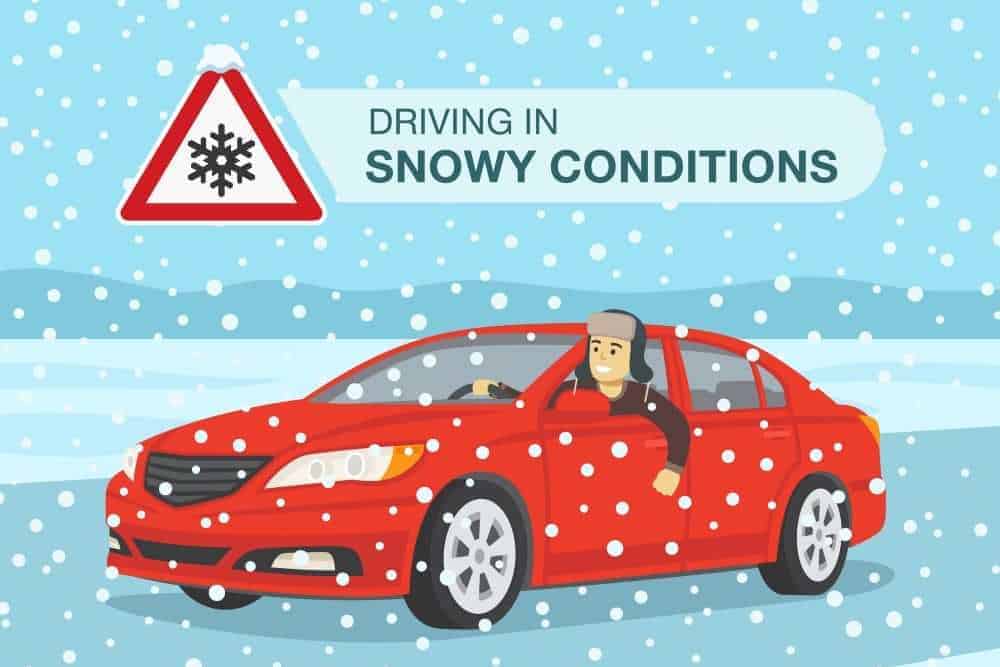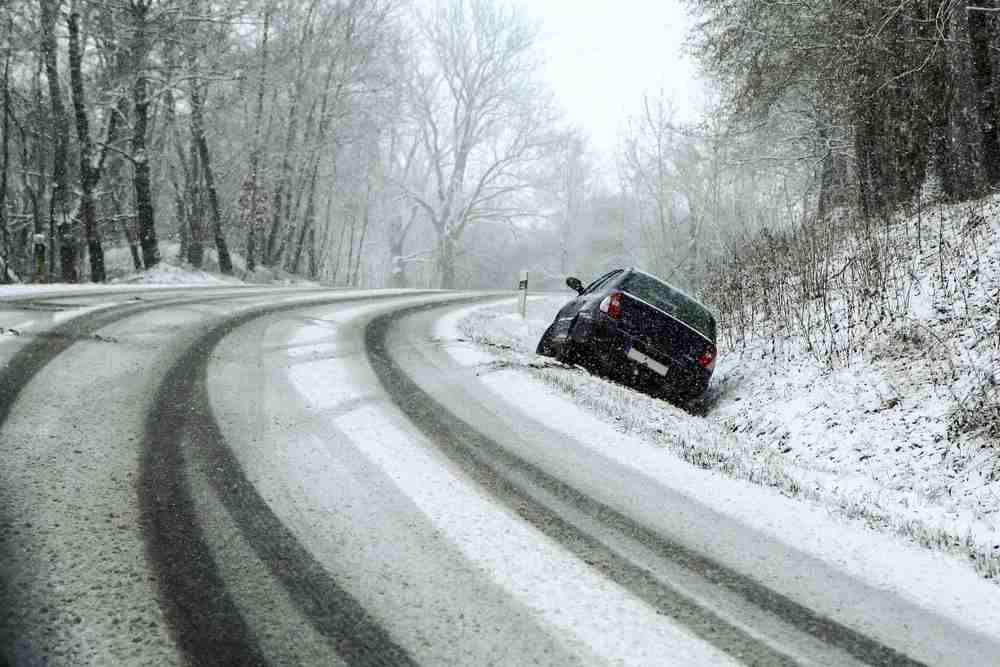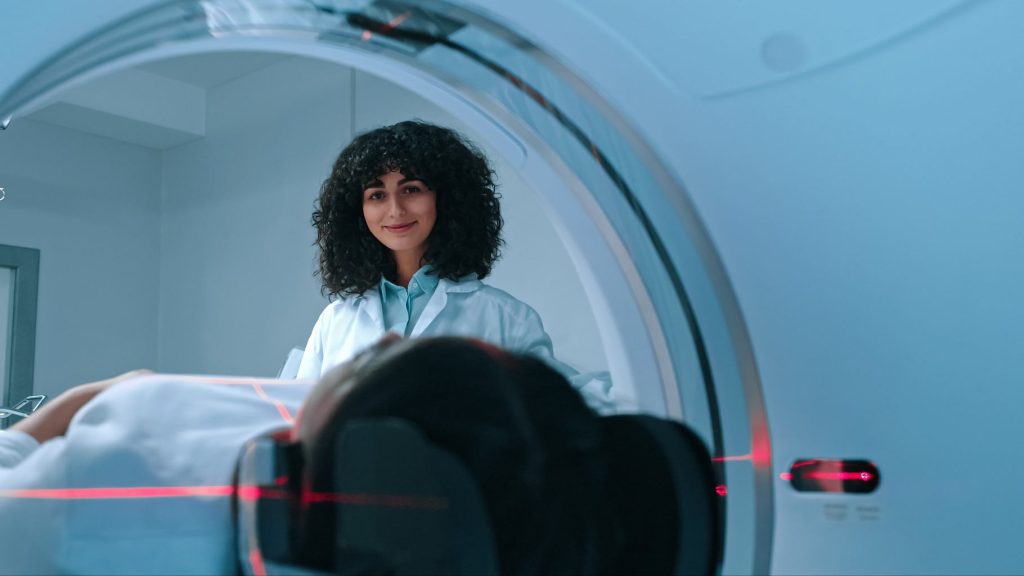 Winter driving can be very challenging, with cold weather and icy road conditions that significantly increase the risk of accidents. No matter where you live, winter weather can wreak havoc on your morning commute or traveling to visit family and friends for the holidays. Even under calm, bright blue skies, cold winter weather can bring surprises that put you and others in danger of an accident on the road. One of the invisible dangers of winter driving is black ice. Before you get behind the wheel this winter, take a moment to check out these tips for winter driving and how to stay safe on black ice.
Winter driving can be very challenging, with cold weather and icy road conditions that significantly increase the risk of accidents. No matter where you live, winter weather can wreak havoc on your morning commute or traveling to visit family and friends for the holidays. Even under calm, bright blue skies, cold winter weather can bring surprises that put you and others in danger of an accident on the road. One of the invisible dangers of winter driving is black ice. Before you get behind the wheel this winter, take a moment to check out these tips for winter driving and how to stay safe on black ice.
Types of Winter Weather and How It Impacts Drivers
 When colder weather moves through your area during winter months, it can lead to icy road conditions that increase your risk of a car accident. Here are some of the main types of winter weather you may encounter depending on where you live and how it could impact your ability to drive safely.
When colder weather moves through your area during winter months, it can lead to icy road conditions that increase your risk of a car accident. Here are some of the main types of winter weather you may encounter depending on where you live and how it could impact your ability to drive safely.
Snow
When it starts to snow, you might look forward to the picturesque moments and the chance to build a snowman with your loved ones. But don’t forget how snow can accumulate on the roads and other surfaces, making things very slippery. When the snow is coming down, it can also reduce visibility, making it hard to see other vehicles and road hazards.
Slush
Slush refers to a mixture of snow and water that can form on the surface of the road when the snow melts and then refreezes. The texture of slush on the road can be very slippery for your tires and may be difficult to drive on.
Frost
When the temperature goes below freezing, or 32 degrees Fahrenheit, frost can form on the surface of the road. When the air is humid or moist, it can leave a thin layer of moisture along the roadways, which can become slippery and make driving more difficult.
Snow Drifts
In areas that get a lot of snow, the snow can start to pile up on the side of the road in what are known as snow drifts. Snow drifts can also build up in open areas and make it hard to see the lines on the roads to see what lane you should drive in. Snow drifts piled high can also make it difficult to see other vehicles on the road or other potential hazards.
Ice
When the temperature drops below the freezing point, any water on the roadways can harden into ice. In fact, any puddles of water or accumulation from recent rain can turn to ice once the temperature goes below 32 degrees. Ice also forms on some surfaces faster than others, including bridges and overpasses. Cold air blowing across moisture on the roads can cause ice to form.
Black Ice
Black ice refers to a specific winter weather hazard that is nearly transparent, which means you might not even see it until it’s too late. Black ice is a very dangerous condition where ice forms on the road and vehicles cannot gain any traction. Streets, bridges, and overpasses can develop black ice, especially at night when visibility is already decreased and is the leading cause of winter driving accidents.
Types of Car Accidents Black Ice Can Cause
Whether you lose visibility while the snow is coming down or you hit a patch of black ice, you could end up in a car accident. Here are five types of car accidents that black ice and other winter weather conditions can cause.
Fishtailing
Fishtailing refers to when the back wheels of a vehicle lose traction on the roadway and the car swerves from side to side, similar to the flapping of a fish tail. If the rear wheels lose their grip on the roadways, your car won’t move in the direction that you’re steering. This can cause you to collide with other cars on the road. If you end up fishtailing because of ice or some other winter mix hazard, you could also hit a road sign, guard rail, or another roadway hazard.
Single-Car Accidents
A single-car accident refers to when only one car gets into a wreck. One example of a single-car accident is if you were to hit a patch of black ice, the wheels of your vehicle lose traction, and you can no longer control the direction your car is moving in. If this happens, your car may slide or skid into a road sign, another vehicle, or another object nearby.
Multiple-Car Accidents
Multiple-car accidents can occur if one or more vehicles encounter black ice at the same time. If you drive over some black ice and lose control of the vehicle, you could collide with another nearby vehicle that is also having trouble with the wintery mix on the road.
Collisions
Roadway collisions refer to when a vehicle collides with another vehicle or object, resulting in a car accident. The most common type of winter driving collisions occurs because of ice or black ice on the roadways. Many car insurance companies will consider both single-car and multiple-car accidents as types of collisions in terms of your coverage.
Rollovers
In serious cases, your vehicle could lose traction, slide on black ice, and end up rolling over. A rollover crash refers to whether a car tips over onto its side or onto the roof. Rollovers have a much higher risk for serious injury, especially compared to other types of car accidents. You could hit a curb, a guardrail, or turn too quickly while driving on slippery roads and end up in a rollover car accident.
7 Tips for Winter Driving and Staying Safe
Check out these seven tips for staying safe while driving in the winter and practice car accident prevention.
Drive Slowly
When you know there’s bad weather or a wintery mix, you want to make sure to drive slowly. Sometimes even going the set speed limit can be too much for when you are driving on slippery roads with potential snow, slush, or ice around.
Brake Carefully
While you might be tempted to hit the brakes when you see a patch of snow or ice, you could actually end up doing more harm than good. Braking too fast or too hard can cause you to fishtail or lose control of the vehicle. Instead, slowly and gently apply pressure to the brake if your tires are about to drive across snow, ice, or water on the roads.
Keep Your Distance
Make sure you leave a large gap between your vehicle and the car in front of you when driving in winter weather. Even if your brain has a great reaction time, your car might not be able to respond effectively when the ground is wet or slippery. The more space you leave between you and the car in front of you, the better you can slow down safely and avoid a potential collision.
Check Your Tires
When the weather starts to drop, your tires start to lose air. Always check your tires before any type of winter storm or significant change in the weather so you can be prepared. You also want to check the tread on your tires to make sure they have enough traction to handle driving on different surfaces that can become quite slippery during wintertime.
Use Your Headlights
You may want to keep your headlights on at all times during the winter months to help with visibility. If it starts raining or snowing, you don’t have to worry about making sure you turn your lights on while paying attention to the road. Plus, turning on your headlights increases your visibility to other drivers.
Prep an Emergency Kit
It is a good idea to keep an emergency kit in your car in case you become stranded on the side of the road. An emergency kit can include helpful items like a flashlight, a blanket, a first aid kit, and a shovel. You may also want to include reflective gear to wear or place on your car to help improve visibility and stay safe while you wait for help to arrive.
Stay Alert
Pay attention to the road and be alert for any potential hazards so you can anticipate issues before they arise. Turn any music down, ask passengers to stay quiet, and focus on the road so you can keep an eye out for potential ice patches or even other vehicles losing control in the winter driving conditions.
Reduce Your Risk for Car Accidents and Injuries
The more you practice these safe driving tips, the more you can reduce your risk of car accidents injuries with winter driving. However, if you do end up in a car accident, you want to have a trusted team of doctors on hand who can help. Visit AICA Orthopedics near you for a team of orthopedic doctors, neurologists, chiropractors, and physical therapists dedicated to treating all kinds of car accident injuries. With 18 locations across Atlanta, our team of car accident doctors at AICA can help make sure you get quality treatment and care so you can recover as quickly as possible.





